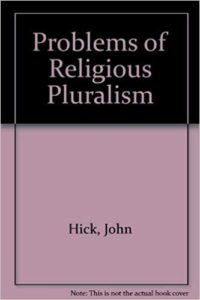What is Neo Buddhism?
Although Neo Buddhism is based on the Buddhist spirit, it is not limited to so-called “Buddhism”. The eternal truth that pervades the universe is called “Buddha Dharma”.
We aim to update the Buddha Dharma as a Dharma that can be adapted to the new age (earth age and space age) and to dialectically synthesize the world’s major thoughts, religions, spiritualities, and philosophies.
Through dialectical synthesis, we believe that each thought, religion, spirituality, and philosophy can maintain the essence of its individuality and work together in a form of “friendly competition,” rather than conflict. In other words, “Absolutely Contradictory Self-Identity” on a global level.
In a word, “spiritual phenomenology for a new age that synthesizes various religions, philosophies, and ideas,” this is Neo Buddhism.
In addition, we believe that all human activities, including politics, economics, management, psychology, academics, and the arts, are “the embodied action of Buddha Dharma in the phenomenal world”.
Therefore, the Buddha Dharma is positioned as the base, and each field, such as politics, is a branch of the Buddha Dharma.
Neo-Buddhism envisions a range of activities to build a basic theory for updating Buddha Dharma, and at the same time, to make that theory the foundation and direction for each field and area in the new era.
Specifically, for example, the order is as follows.
- Dialectically synthesize and update Buddhism in the true sense of the word, in the order of Theravada Buddhism (thesis) → Mahayana Buddhism (antithesis) → Neo-Buddhism (synthesis)* There are several scholars and monks who claim to update Buddhism, but I think they do not seem to have succeeded.
- Update and synthesize Christianity and Islam from a Neo-Buddhism perspective.
If this is successful, the world’s three major religions will be able to pursue their common ideal, “Utopianization of the Earth,” while utilizing their individual characteristics, not through warfare but through friendly competition.
Neo-Buddhism will provide the theoretical base for this.
As an example, please read the article “Neo Buddhism overcomes the differences between Buddhism and Christianity“.
- English articles on this site are translated by Syou Takada (as of 2022). Takada is not that fluent in English, so I hope you will be generous in reading them.
- This site has nothing to do with the “neo-Buddhist movement” in India.
Neo-Buddhism understanding of <God and Buddha>
In Neo Buddhism, we understand that the “fundamental Buddha” is the dharma body (essential part) of the historical Shakyamuni Buddha (Gautama Siddhartha) as the top leader in the earth’s magnetic field, and is also the God of Christianity and Islam.
In other words, the being that Christ Jesus called “My Father” and “Allah” in Islam are the same being, and that “Supreme Being” is Shakyamuni Buddha as the Dharma-body Buddha.
Shakyamuni Buddha as the Dharma-body is the “Eternal Buddha” in the Lotus Sutra, the “Mahavairocana Buddha” in the Kegon Sutra, and is called “Dainichi Nyorai” in esoteric Buddhism.
*In the Western/Middle Eastern context, In Neo Buddhism, we use the name “Elohim” for God.
In other words,
Eternal Buddha = Father in Heaven = Allah = Elohim
This one Dharma-body Buddha manifests himself in various ways according to each region and time period (or dimension).
This can be said to be “taiki-seppo(the best suitable expression of the teaching for the target audience)” as existence
For example, in Buddhism, Amida Nyorai is the manifestation of the “compassion” part of the “Eternal Buddha”.
Of course, there are many other advanced spiritual beings besides Shakyamuni Buddha. Christ Jesus and Muhammad are, of course, such beings.In Japan, Amaterasu Omikami is such an entity.
However, if we trace them back to the origin, we find that they all work for the realization of the ideal of “Eternal Buddha” and that there are various bodhisattvas or angels who assist these buddhas and savior-like beings.
In addition, there are various bodhisattvas and angels who assist these buddhas, bodhisattvas, and messiahs.
*Since these bodhisattvas and angels are sometimes called “gods”, there is some confusion about the concept of “gods”.
The fact that Buddha and God have various names means that the same God or Buddha is called by different names and understood in different times, regions, customs, and peoples.
These thoughts are almost in line with the idea of “Religious Pluralism” of John Hick (e.g., his book “Problems of Religious Pluralism“).
Representative Profile
Name:Syou Takada
*Facebook
*Twitter

- Born in Kanagawa, Japan (1967) Lives and works
- Graduated from Waseda University, School of Law
- Work: small business owner, investor, consultant
- Hobby: Playing with my daughter (9 years old in 2019)
- Favorite music: Mahler, The Beatles, Herbie Hancock, Perfume
- Favorite movies: “The Godfather,” “A Bronx Tale,” and other mafia films. I also like comedies.
- Most reread books: “Romance of the Three Kingdoms” (manga by Mitsuteru Yokoyama), “Arsene Lupin” series (Maurice Leblanc)
Mission
With “Neo-Buddhism”
- To reconstruct a system of truth that is compatible with the new age and future society, and to pass it on as a legacy to future generations.
- To lead as many people as possible to become Bodhisattvas (angels) in the broad sense of the word, practicing self-interest and altruism.
Working in the Real World
One of the prophets of our time. The area of expertise in the real world is the exploration of thought and religious philosophy as “the study of synthesis.
Maitreya, as in Theosophy, is one level below the Buddhi realm (Buddha realm), but I self-identify as an individuality that draws from the spiritual currents of Maitreya.

